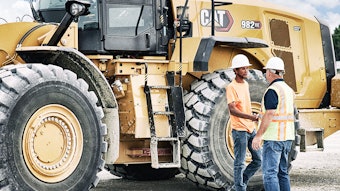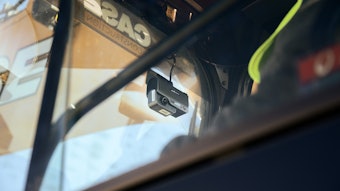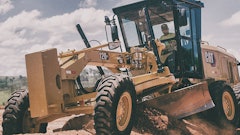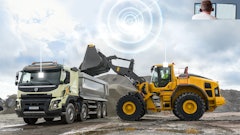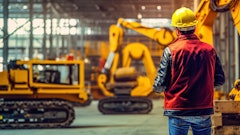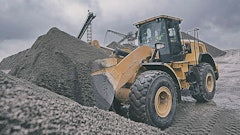
 One of cloud computing’s key contributions to automation will be its ability to use data input from multiple sensors and devices. As the systems become commonplace, they will be the platform that shows contractors how to integrate other technologies.
One of cloud computing’s key contributions to automation will be its ability to use data input from multiple sensors and devices. As the systems become commonplace, they will be the platform that shows contractors how to integrate other technologies.
Humans have an ancient desire to make machines work for us without intervention. The first successful example dates back over 2,000 years to the Greek mathematician Ctesibius. Plagued by the inaccuracies of traditional water clocks, he invented an immensely complex automated water clock that remained the most accurate timepiece in the world until the 17th century. Today, driven by the same motivation and bolstered by millennia of innovation, we’re just steps away from automating tasks that seemed impossible only a few decades ago.
Technology progresses exponentially faster every year, now introducing advances in months that used to take years of development. Today technology is not just aimed at automating simple rote tasks; it is on the brink of removing humans from entire industries.
A future where machines handle hard work with incredible speed and accuracy seems great. But can the labor market afford automation to this extent without skyrocketing unemployment? What will millions of people do when their labor is no longer necessary?
It won’t be long before we need that answer.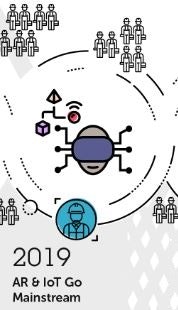 By 2019, construction will likely see widespread adoption of software capable of integrating and reporting the data from internet of things sensors and augmented reality devices into a single picture of the job site. Drones will produce an aerial map of a project that will integrate a live data feed of site and material conditions, and worker location and status.
By 2019, construction will likely see widespread adoption of software capable of integrating and reporting the data from internet of things sensors and augmented reality devices into a single picture of the job site. Drones will produce an aerial map of a project that will integrate a live data feed of site and material conditions, and worker location and status.
There’s still time to start a conversation about automation’s role in construction, but not much. We may see the first fully automated job site as early as 2025.
Construction automation rising
Manufacturing is the largest adopter of automation, and it’s probably the most familiar example: think hundreds of robot arms moving parts around a factory and assembling them. The controlled, repeatable process is relatively simple and safe to automate, which is why it has a long history.
Construction is so complex that the tech industry hadn’t actually created useful solutions for it until recently. And, it wasn’t until innovations like the decreasing size and increasing power of LIDAR units that automation was even on the radar. However, now that the tech is here and affordable, the most forward-thinking contractors are barreling towards its implementation.
The Law of Accelerating Returns, from computer scientist and futurist Ray Kurzweil, demonstrates that technology’s exponential pace of growth will give us approximately 20,000 years of progress in the next 100 years. 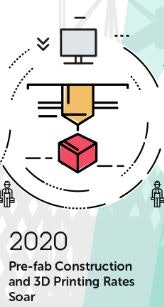 By 2020, we suspect most major contractors will be using prefab construction because of its project-delivery and cost advantages. Combining 3D printing tech with pre-fab construction will mark the largest shift in the organization of construction projects in the modern era.
By 2020, we suspect most major contractors will be using prefab construction because of its project-delivery and cost advantages. Combining 3D printing tech with pre-fab construction will mark the largest shift in the organization of construction projects in the modern era.
To give you an idea of what this progress looks like, consider LIDAR (Light Detection and Ranging), the tech behind self-driving cars and construction vehicles. Invented in the 1960s, the system works by emitting lasers and measuring how they return after bouncing off an object. In 1992, Popular Science praised the Los Alamos National Laboratory for creating a 200 lb. “mini-LIDAR” that could fit in a footlocker, an astonishing accomplishment considering their previous unit occupied 200 cu. ft. of space.
Today, 25 years later, you can purchase a LIDAR scanner that is small enough to fit in the palm of your hand and light enough to attach to a UAV for a few thousand dollars. That’s a lot of innovation for two decades, but nothing in comparison to where the technology is going over the next couple years. MIT and DARPA have already created prototypes of a LIDAR system smaller than a dime that could be produced for less than $10.
It took about two decades for LIDAR to go from footlocker-sized to handheld, and then less than five years to go from handheld to the size of a microchip.
Another key building block to autonomous construction is already spreading rapidly through the construction industry: prefabrication. Pre-fab construction mimics  Today's drones can automatically fly over and measure your construction site with no human interaction. Once regulations catch up with the technology, contractors will use drones flying pre-programmed routes to collect data and monitor progress multiple times a day, if not 24/7. Drones' overhead view will also make self-driving machines safer and more effective.
Today's drones can automatically fly over and measure your construction site with no human interaction. Once regulations catch up with the technology, contractors will use drones flying pre-programmed routes to collect data and monitor progress multiple times a day, if not 24/7. Drones' overhead view will also make self-driving machines safer and more effective.
Other technologies laying the groundwork for human-free construction include drones, sensors for the internet of things (IoT), 3D printing, and self-guided machines. As contractors reap the benefits of these new technologies, they quickly ramp up with new ones for the advantage it gives them over their competitors.
Why is construction shifting toward automation?
Accelerating development of technologies and construction’s inherently competitive nature are pushing the industry toward automation. When implemented correctly, technology increases efficiency, quality and reliability while reducing costs. From an economic perspective, it’s a no-brainer for general contractors to adopt proven technology.
The most prominent risk is cost. Automation reduces cost in the long-run, but to get up and running with new technology is prohibitively expensive for many firms. If the implementation doesn’t work out, it could jeopardize a company’s future.
The LIDAR example demonstrates that the cost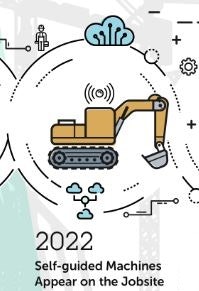 Expect machine-guided construction technology to progress at breakneck speed as it benefits from the auto industry’s race to self-driving cars. Initial moves to self-guided machinery for excavation and other basic tasks will likely come by 2022. Once it’s proven safe/effective, adoption will move rapidly and the technology will evolve towards more complex tasks.
Expect machine-guided construction technology to progress at breakneck speed as it benefits from the auto industry’s race to self-driving cars. Initial moves to self-guided machinery for excavation and other basic tasks will likely come by 2022. Once it’s proven safe/effective, adoption will move rapidly and the technology will evolve towards more complex tasks.
After clearing the price hurdle, security will be the only other major concern for firms considering automation. Systems that rely heavily on computers and networks are vulnerable to cyber attacks that could derail a project. However, with proper precautions and security training, not to mention advances in cybersecurity tech, this risk probably won’t prevent everyone from adopting.
8 Year Countdown to Fully Autonomous Construction
The last several years have seen an explosion of technologies that have made their way into construction, including cloud software, drones, augmented reality (AR), virtual reality (VR), IoT, pre-fab construction and others. While it’s impossible to predict an exact timeline of when these will all become mainstream, we think the following is a good rough estimate for when technologies will be adopted by major general contractors.
2018: SaaS Solutions Permeate the Industry
Without the right software, hardware is ineffective. So, before any other developments take hold, software has to make its impact on the industry. We’re already seeing rapid adoption of construction-specific software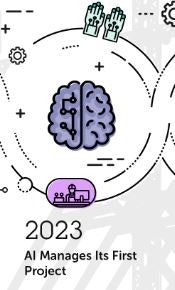 By 2023, construction software developers should roll out first versions of artificial intelligence capable of predicting progress and making simple project-management decisions. It will begin the most rapid progress toward a fully autonomous job site, because of AI's ability to learn from data collected by new sensor technology and create improvements.
By 2023, construction software developers should roll out first versions of artificial intelligence capable of predicting progress and making simple project-management decisions. It will begin the most rapid progress toward a fully autonomous job site, because of AI's ability to learn from data collected by new sensor technology and create improvements.
2019: AR & IoT Go Mainstream
Many sites are already experimenting with AR and IoT using drone data, HoloLens or other AR devices, and material sensors. However, the software needed to really drive productivity improvements from these devices hasn’t been developed fully yet. By the time 2019 comes around, we should see widespread adoption of software capable of integrating and reporting the data from these devices into a single picture of the job site. Drones will produce an aerial map of a project that will integrate a live data feed of site and material conditions, and worker location and status.
2020: Pre-fab Construction Soars and 3D Printing Takes Hold
There’s a reason that Katerra has raised $220 million in funding, and Autodesk invested in Project Frog: prefabricated construction is far more cost effective, efficient, and reliable than traditional methods. Once it’s been further proven in the real world, people will wonder why we ever built things any other way. It will take a couple years,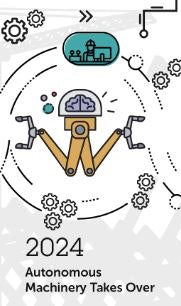 Humans will begin to take a backseat to machines on the job site, from self-driving trucks that deliver materials and remove wastes, to robots that automatically assemble prefabricated units in their predetermined locations.
Humans will begin to take a backseat to machines on the job site, from self-driving trucks that deliver materials and remove wastes, to robots that automatically assemble prefabricated units in their predetermined locations.
3D printing can already build a small house in a day. In another couple of years the tech will develop far enough to handle large sections of major projects. The combination of this tech with pre-fab construction will mark the largest shift in the organization of construction projects in the modern era.
2021: Regulations Allow Constant Drone Monitoring
The aerial data captured by a drone is invaluable for measuring project progress and monitoring a site. Currently, regulations require contractors have a licensed drone pilot on staff or hire a pilot if they want drone data. However, the technology for drones to automatically fly over and measure your site with no human interaction already exists. Once regulations catch up with the technology, we will likely see every contractor use a set of drones flying pre-programmed routes to collect data and monitor progress multiple times a day, if not 24/7. The overhead view 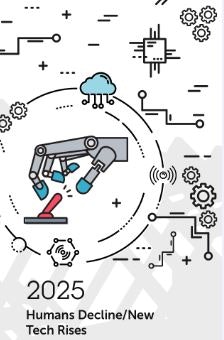 With drones acting as eyes in the sky, sensors as eyes on the ground, and self-guided machinery as its hands, AI will turn a construction site into the ultimate autonomous entity, building a structure with more speed and accuracy than we ever thought possible – taking breaks only when the weather prevents progress.
With drones acting as eyes in the sky, sensors as eyes on the ground, and self-guided machinery as its hands, AI will turn a construction site into the ultimate autonomous entity, building a structure with more speed and accuracy than we ever thought possible – taking breaks only when the weather prevents progress.
2022: Increase in Machine-Guided Construction
Machine guided construction is currently in its infancy, but you should expect the technology to progress at breakneck speed, especially as it benefits from the automotive industry’s race to build the first self-driving car. We will probably start seeing the initial move to self-guided machinery for excavation and other basic tasks by 2022. Once it’s proven safe/effective, it’s adoption will move rapidly and push towards more complex tasks.
2023: AI Takes First Control
By 2023, construction software should begin to roll out its first versions of AI capable of predicting progress and making decisions about simple project management tasks. This development will mark the beginning of the most rapid progress toward a fully autonomous job site, because of how fast AI learns and creates improvements. The software will make use of data collected from all of the previous developments in this timeline to not only make real-time decisions more accurately and faster than a human, but to also learn how to improve construction workflows.
2024: Completely Autonomous Machinery Arrives
Two years after autonomous machinery makes its appearance with limited use on the job site, it will begin to completely take over the majority of tasks powered primarily by AI systems that can monitor and control job sites. From self-driving trucks that deliver materials and remove wastes, to robots that automatically assemble prefabricated pieces into their predetermined locations, humans will now begin to take a backseat to machines on the job site. People will primarily stay on site to offset the uncertainty that an autonomous job site can successfully build a structure without human presence.
2025: Humans Decline and New Technologies Rise
With drones acting as eyes in the sky, sensors as eyes on the ground, and self-guided machinery as its hands, AI will turn a construction site into the ultimate autonomous entity, building a structure with more speed and accuracy than we ever thought possible – taking breaks only when the weather prevents progress. Starting a skyscraper could become as simple as setting up some initial plans and inputs and pressing the launch button. With the first mostly autonomous buildings built by 2025, humans could be considered a safety risk on construction sites and contractors will use skeleton crews to monitors progress. By this time, we will also see the rise of new technologies that are completely foreign to us. Autonomous job sites will allow these developments to be rapidly integrated, exponentially increasing the speed and success of construction.
Should construction automate?
More than 2,000 years ago, Ctesibius automated a water clock. Today, we’re about a decade away from automating construction of impressive structures. The timeline above is a rough estimate of construction’s probable future. The timeline’s point is not to give precise dates, but to set out a realistic estimate of construction’s snowballing path toward automation.
Given its benefits, it would seem that automation will be an excellent shift for the construction industry, except for the people who lose their jobs to robots. The U.S. Bureau of Labor Statistics estimates approximately 5 million individuals work as construction laborers, and while they’re not all going to be out of work at once, the rapid rise of automation will displace them faster than the labor market will be able to absorb them.
We need to start addressing this reality now.
People often dismiss the issue by claiming that even though automation may make certain jobs obsolete, it will inevitably create new ones. The claim has merits, and has been proven in some cases. But existing examples don’t compare well to the scale of automation we’re about to see in construction.
Commonly cited examples of automation creating jobs involve opportunities for monitoring the newly automated tasks or creating new technical jobs around the development of the machines. These don’t apply to construction. The industry already has more than 500,000 frontline supervisors who would be the natural candidates to monitor automated work. New jobs developing automation would require highly technical educations. No matter how you look at it, there won’t be new jobs readily available for construction workers displaced by automation.
It’s not a dilemma unique to construction. As automation challenges the employment of 5 million construction laborers, following self-driving vehicles displacing many of the 4 million motor vehicle operators in the transportation industry, how will we employ everyone? Do these industries have an obligation to provide jobs to the people who have helped build them?
There are no simple answers to these questions. It’s hard to argue against something that will improve the quality, speed, and cost of construction. But, we also can’t deny the importance of the human element to any industry. At the very least, every industry, especially construction, owes it to their workers to actively choose the extent they will automate and make it known which jobs will and won’t be around in the near future.
Autonomous construction will arrive. Right now, the biggest mistake would be to pretend it is a distant future with far off implications. If we don’t have a conversation about it now, the technology will arrive before construction has a voice in the matter. Get started now, tell us what you think about automation in the comments, on Twitter, on LinkedIn, or wherever people are listening.
Nick Hertzman is a content strategist at Unearth Technologies in Seattle, WA. Unearth integrates drone data with construction documents and 3D spatial analysis to build a communication platform for construction sites with intent to increase productivity, reduce cost overruns and delays, and boost profit margins.





